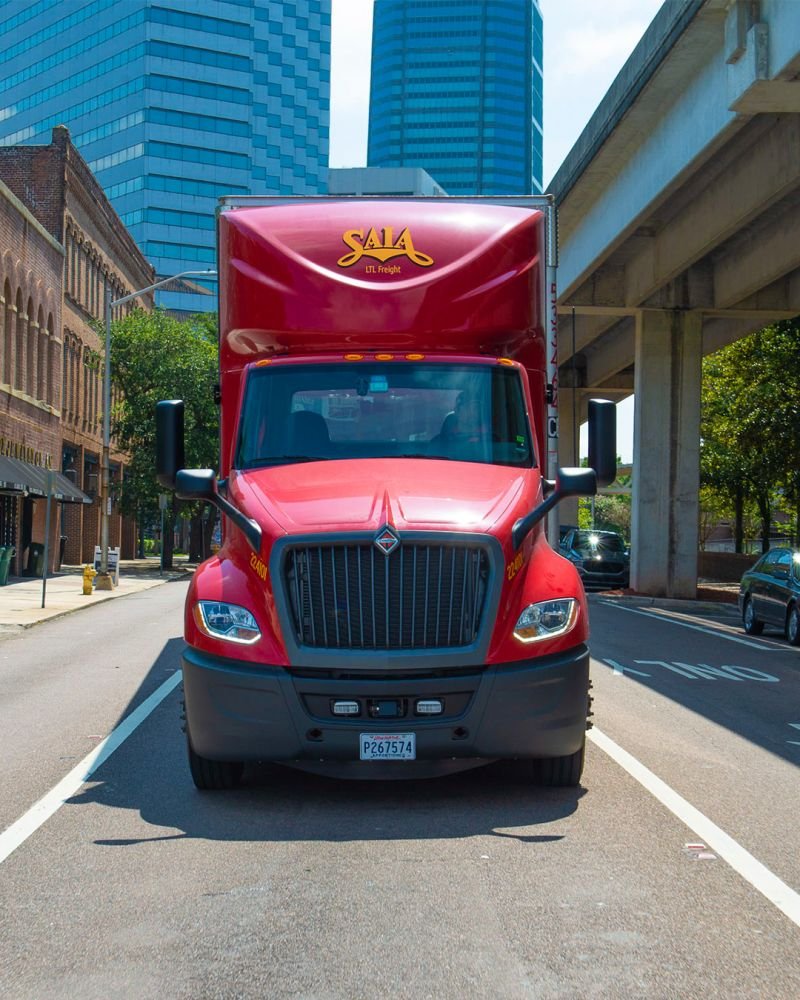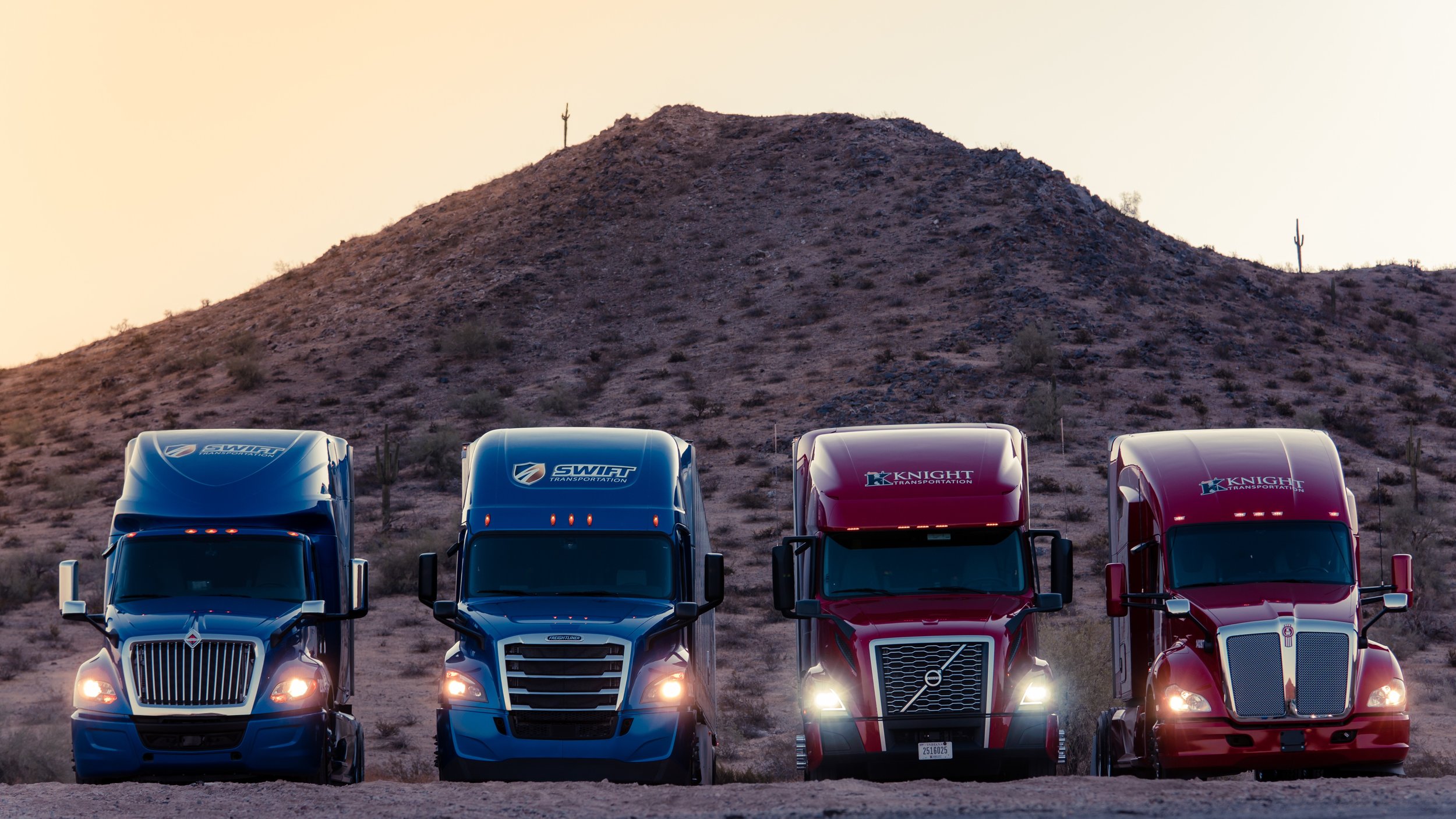
Uber Eats: Real-Time Logistics Disguised as Dinner
Uber Eats looks like food delivery. Under the hood, it’s one of the most sophisticated real-time logistics systems in the world. With driver pooling, dynamic batching, restaurant-side logic, and global coverage, Eats is quietly building an adaptable fulfillment engine—one that could go far beyond meals.

Stord: The Cloud Supply Chain Model That’s Quietly Reshaping Fulfillment
Stord isn’t a 3PL—it’s a logistics layer that lets mid-sized brands move like enterprise players. With a nationwide fulfillment network and software that controls every node, Stord helps DTC and retail brands scale fast, stay flexible, and avoid long-term logistics lock-in.

Parade.ai: Turning Freight Brokerages into Scalable, Repeatable Machines
Parade.ai doesn’t want to replace brokers—it wants to make them faster, smarter, and more profitable. By embedding itself inside the freight workflow, Parade turns tribal carrier knowledge into a behavioral data engine. The result? Lower fall-offs, faster coverage, and a freight memory brokers can scale.

Flock Freight: Shared Truckload Isn’t a Gimmick
Flock Freight isn’t just a broker—it’s building a new freight category. By using AI to pool shipments from multiple shippers onto a single truck, they created a patented shared truckload (STL) model that’s cleaner, cheaper, and smarter than LTL. And it’s not a gimmick. It’s a margin-positive innovation that works for both sides of the network.

Offor Health: Turning Underused Spaces into Scalable Healthcare Infrastructure
Most healthcare bottlenecks aren’t clinical—they’re logistical. Offor Health is solving that by routing mobile specialists into underutilized medical offices across rural America. From mobile anesthesia to distributed diagnostics, it’s building healthcare’s shared infrastructure layer.

Boxed: When the Logistics Stack Wasn’t Enough
Boxed built the warehouse. It built the software. But the margin math never worked. In this post-mortem, I break down why vertical integration wasn’t enough, what its failure says about DTC logistics, and why operations alone can’t defend a weak business model.

Flexe: The $1B Logistics Platform That Turns Warehouses Into a Marketplace
Flexe is what happens when you stop thinking about warehouses as fixed assets—and start treating them like a network. With over 1,500 partner sites, $260M in funding, and deep integrations with top retailers, Flexe turned underutilized capacity into a scalable freight layer. It’s not just warehousing—it’s infrastructure-as-a-service.

Home Depot: The $150B Freight Engine Behind DIY Retail
Home Depot isn’t chasing Amazon. It’s building something different: a national freight network designed to serve contractors, projects, and big, heavy orders with speed and precision. From RDCs to jobsite flatbeds, the $150B retailer turned logistics into its strongest moat.

FedEx: Rewiring a $90B Giant for the Next Era of Freight
FedEx was once the blueprint for global logistics—but years of silos, underperformance, and rising competition forced a reckoning. Now, under new leadership, FedEx is consolidating its Ground and Express networks, investing billions into automation, and selling off weak freight lanes to streamline its footprint. This blog breaks down why the $90B logistics giant is shrinking to scale—and whether that gamble will finally close the gap with UPS and Amazon.

J.B. Hunt: From Asset Fleet to Freight Marketplace
J.B. Hunt didn’t disrupt the freight industry—it outlasted the disruptors. While digital brokers burned VC cash, Hunt built J.B. Hunt 360°, a $1B+ freight marketplace layered onto its existing fleet, intermodal network, and contract base. With nearly half its revenue now coming from intermodal—and a tech stack rooted in operational execution—it may be the most future-proof freight company in America.

H-E-B: Winning the Grocery War with Supply Chain Mastery
While national chains spent billions chasing grocery dominance, H-E-B quietly built a fortress. Its edge? A vertically integrated supply chain, disaster-hardened distribution, and deep regional control. Here’s how it wins—every time.

Ryder: Scaling Logistics-as-a-Service Before It Was Cool
Ryder might be best known for rental trucks—but behind the scenes, it runs one of the most complete logistics platforms in North America. From dedicated fleets and e-commerce fulfillment to final-mile delivery and network optimization, Ryder’s Logistics-as-a-Service stack is built to scale with stability. This post breaks down why it works—and why it’s winning.

Graybar: The 150-Year-Old Distributor Keeping America Wired
Greybar isn’t flashy, but it’s everywhere. This 150-year-old, employee-owned distributor has quietly built one of the most resilient supply chains in North America—powering construction, utilities, and industrial projects with just-in-time delivery and deep product expertise. While others chase disruption, Greybar proves that discipline, ownership, and logistics done right still scale.

Built for the Freight Floor: How ShipperCRM Turns Sales Reps into Relationship Builders
Most brokerages treat CRM like an afterthought. ShipperCRM changes that by giving reps freight-native workflows, lane-level visibility, and structured follow-up that turns quotes into relationships. It’s not just about logging activity—it’s about protecting margin.

Saia’s Long Game: How Operational Discipline Built an LTL Powerhouse
Saia didn’t explode onto the LTL scene—it compounded its way in. This post unpacks how Saia quietly built one of the most disciplined and profitable freight networks in North America by focusing on terminal density, capital restraint, and freight execution. While others chased volume, Saia scaled margins.

Knight-Swift: How Freight Density Became a Competitive Advantage
Knight-Swift isn’t just the largest truckload carrier in North America by size—it’s one of the most efficient by design. This post breaks down how network density, operational discipline, and strategic mergers built a freight machine that scales cost advantages across every mile.

Shein’s Supply Chain: How Real-Time Logistics Beat Traditional Fast Fashion
Everyone knows Shein for fast fashion. Fewer realize its true weapon is logistics: a real-time supply chain built to react, not predict. This post unpacks how Shein turned speed, data, and supplier integration into an unbeatable retail engine—and why traditional brands can't catch up.

Chipotle’s Real Moat: How Cold Chain Logistics and Prep Line Innovation Scaled Fresh Food
Everyone knows Chipotle for fresh ingredients and fast service. But behind the scenes, it’s a logistics story. This post breaks down how Chipotle built a farm-to-restaurant cold chain and redesigned kitchen workflows to scale fresh food faster—and why their operational strategy is harder to copy than it looks.

Convoy’s Shutdown and the Limits of FreightTech Hype
Convoy raised over $900 million and promised to reinvent trucking with software. By late 2023, it collapsed—leaving behind a lesson that logistics can’t be disrupted by tech alone. This post unpacks what really went wrong: from unit economics to market cycles to the hard truth that moving freight requires more than matching loads—it requires control.

Forum Mobility and the Quiet Electrification of Freight Infrastructure
Electric trucks are coming—but charging infrastructure isn’t. Forum Mobility is solving the missing link in freight electrification by building high-capacity depots at California’s busiest ports. Backed by $400M+ in funding, they’re not just supporting compliance—they’re laying the grid foundation for zero-emission logistics. This is what infrastructure-first electrification looks like.